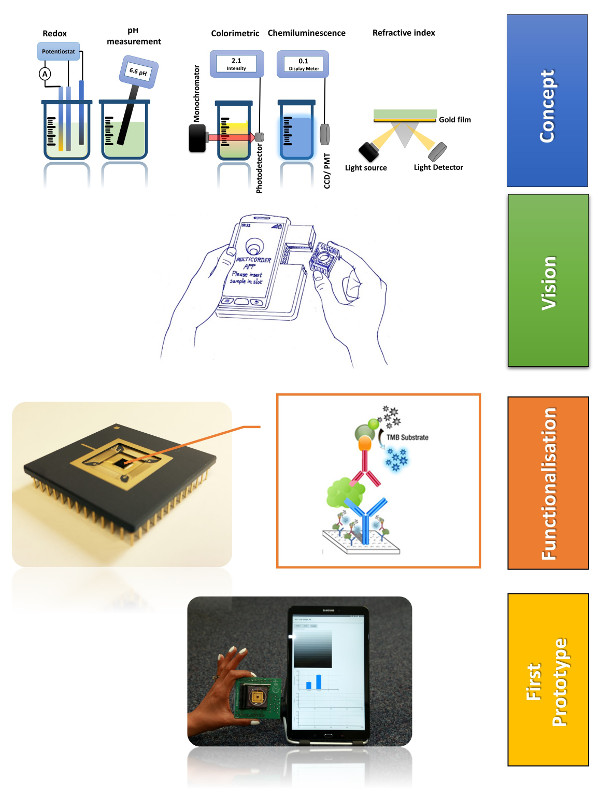About
Microelectronics technology has led to a revolution in computer and communication technology that began almost immediately after the transistor was invented. The exponential rate of technological advancement that is described in Moore’s Law has been propelled by $1Tr of investment over 50 years. However CMOS technology, which now dominates the microelectronics industry, has proven itself to be immensely versatile. For example, the digital camera chip that uses silicon photodiodes (PD) is now ubiquitous. More recently CMOS has been exploited to make the large arrays of ion sensitive field effect transistors (ISFET) used in the Ion Torrent next generation sequencing system. Exciting new opportunities now lie in pursuing non-roadmap “more than Moore” technology to discover and exploit the as yet unfulfilled potential of CMOS in markets and applications that have historically lain outside the realm of microelectronics.

The Multicorder Programme aims to show the potential of microelectronics technologies used today for computers and communications to diversify into sensing for broad spectrum imaging, diagnostics, chemical synthesis and biotechnology. In the Multicorder project we are developing novel arrays of sensor technology on CMOS platforms. Sensing technologies such as redox, pH measurements, colourimetric measurements, chemiluminescence and refractive index sensing are some of the technologies that has been integrated into a single CMOS platform. Our research incorporates the design of optical and chemical sensors, microarchitectures, and post-processing of the CMOS chips in the James Watt Nanofabrication Centre of the University of Glasgow to add nanophotonics, microfluidics and packaging technology. Collaborating with colleagues in Newcastle University, the School of Chemistry at Glasgow University and the Institute of Infection, Immunity and Inflammation, we are exploring modes of chemical and biochemical functionalisation on silicon, and working towards new silicon based assay technologies.

